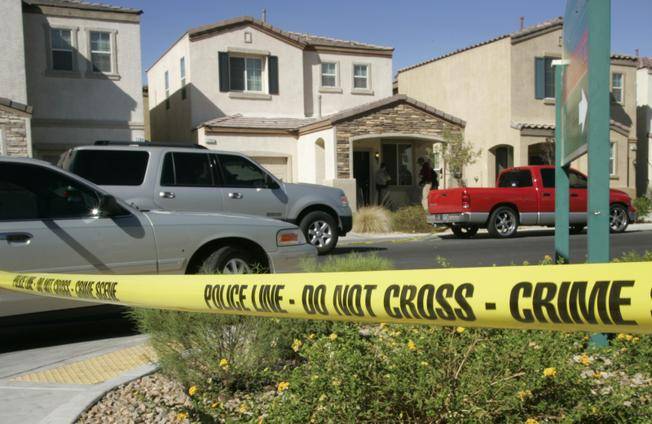In the last two weeks, a pair of double crimes rocked the Valley: a murder-suicide and a second murder-attempted suicide. In both cases, the murder victims were women and the suicide victims were men. The similarity of the two crimes—they both happened in the north end of the Valley within a few days of each other—raises questions about whether the recession is pushing more people to acts of violence, in particular suicide.
In Nevada this is an important question, since the state has historically been among those with the highest per-capita rates of suicide. Nevada’s rate hovers just above 19 people per 100,000, nearly double the national average.
According to the Clark County Coroner’s Office, there were 351 suicides completed in 2006, 349 in 2007 and 385 in 2008. In 2009 so far there have been 244 suicides, which suggests a year-end pace a little below last year’s. The American Association of Suicidology maintains that while there’s a good correlation between unemployment and suicide, there’s no “clear association” between suicide rates in the U.S. and economic recessions. Short-term increases in unemployment, in other words, are not likely to register in the data. Still, throughout the late ’20s and early ’30s, as the Great Depression took hold of America, rates of suicide shot up from an average of between 11 and 12 per 100,000 between 1918 and 1926 to a peak of 17.4 in 1933.
“In the absence of people leaving notes which clearly say, ‘I’ve lost everything, my house my job my family,’ in the absence of evidence that those notes are on the rise, it’s very hard to say anything at all, except to note linkages,” says Matt Wray, an assistant professor of sociology at Temple University in Philadelphia, who’s done extensive research on suicide in Nevada.
But what about murder-suicide? “You’ve got two extremely difficult issues,” says Linda Flatt, suicide prevention trainer with the Nevada Office of Suicide Prevention. “It’s difficult for survivors. They don’t know where they fit.”
According to Wray, cops refer to murder-suicides with the shorthand “homi-sui,” but do these crimes warrant consideration as a specific kind of crime? At this point, probably not. There’s not enough data to correlate suicides with homicides to reliably establish how prevalent these double tragedies are. Homicide investigators tend to treat them as homicides. Wray says that only domestic violence researchers tend to treat murder-suicides as distinct events, since so much of the pattern is an “estranged boyfriend or husband killing a woman.”
In the U.S., suicide rates have remained pretty stable throughout the 20th century, usually around 10-12 people per 100,000. I asked Wray whether that means the message of suicide prevention is not reaching the people it needs to, or whether the message itself isn’t working.
“We don’t know what our message is,” he replied. “You’ve got psychiatrists saying to bring down suicide rates we should be diagnosing and treating depression much more aggressively. Those of us who don’t believe that’s the right approach look to larger social and environmental issues. We should provide people with more forms of social support and connectedness.” This might take the form, he notes, of training primary-care physicians to conduct universal mental-health check-ups during routine physicals.
“There is an awareness,” says Mike Bernstein, a health educator with the Southern Nevada Health District. “The positive thing is in the last five to six years we’ve generated an increased awareness of the problem. Nevada has been at the top of suicide statistics for 15 years.”
But is the mythos of Vegas—the win-it-all or lose-it-all capital of risk—useful in telling us something about suicide, or does it merely obscure the hard truths about it? Wray notes that some researchers argue that “whatever lessons we might learn about suicide in Las Vegas are just not going to be translatable, because the urban ecology of Las Vegas is so unique. I don’t feel that way. Las Vegas’ uniqueness allows us to see environmental factors and social factors that are harder to see elsewhere.”








Previous Discussion: